Abstract
OBJECTIVE--To determine if the oil spillage from the tanker Braer had any immediate health effects on the exposed resident population. DESIGN--Cohort study with a comparison against controls, exposure status being assigned on the basis of geographical location. SETTING--Rural Shetland. SUBJECTS--All those resident on or after 5 January 1993 (day 0) within 4.5 km of the site of tanker's grounding. Controls matched for sex and age were drawn from a general practice list 95 km distant. OUTCOME MEASURES--Demographic details; smoking and alcohol consumption; perception of health and reported presence or absence of specific symptoms; peak expiratory flow; results of haematology, liver and renal function tests, and blood and urine toxicology. RESULTS--Of subjects contacted, 420 (66%) exposed people and 92 (68%) controls were studied; 56 non-attenders were surveyed. Principal health effects arose on days 1 and 2 and were headache, throat irritation, and itchy eyes. No significant differences between those exposed and controls were found for any of the biological markers. Toxicological studies did not show any exposures that are known to affect human health. CONCLUSIONS--The study confirmed the anecdotal reports of certain acute symptoms. No evidence of pulmonary, haematological, renal, or hepatic damage was detected at the population level. Toxicological samples from exposed people did not find levels known to affect human health. Further studies are required to ascertain whether there have been any long term effects on the population.
Full text
PDF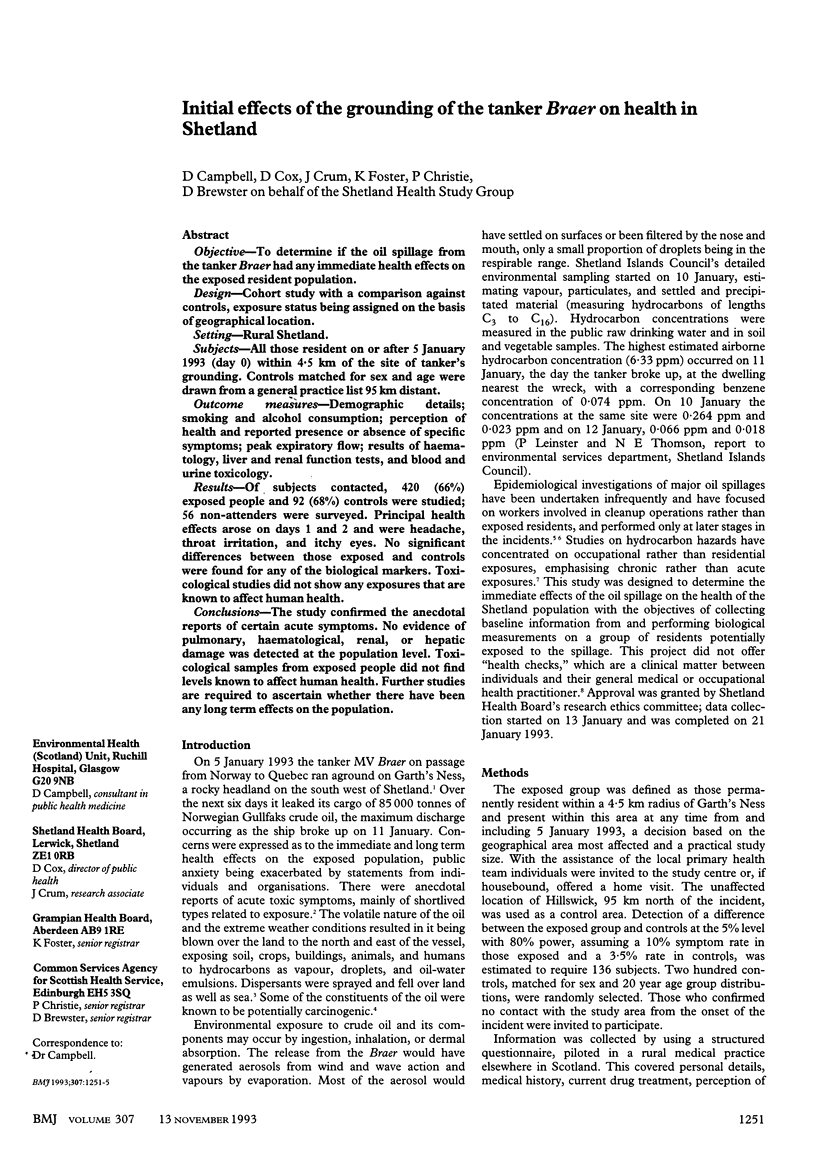
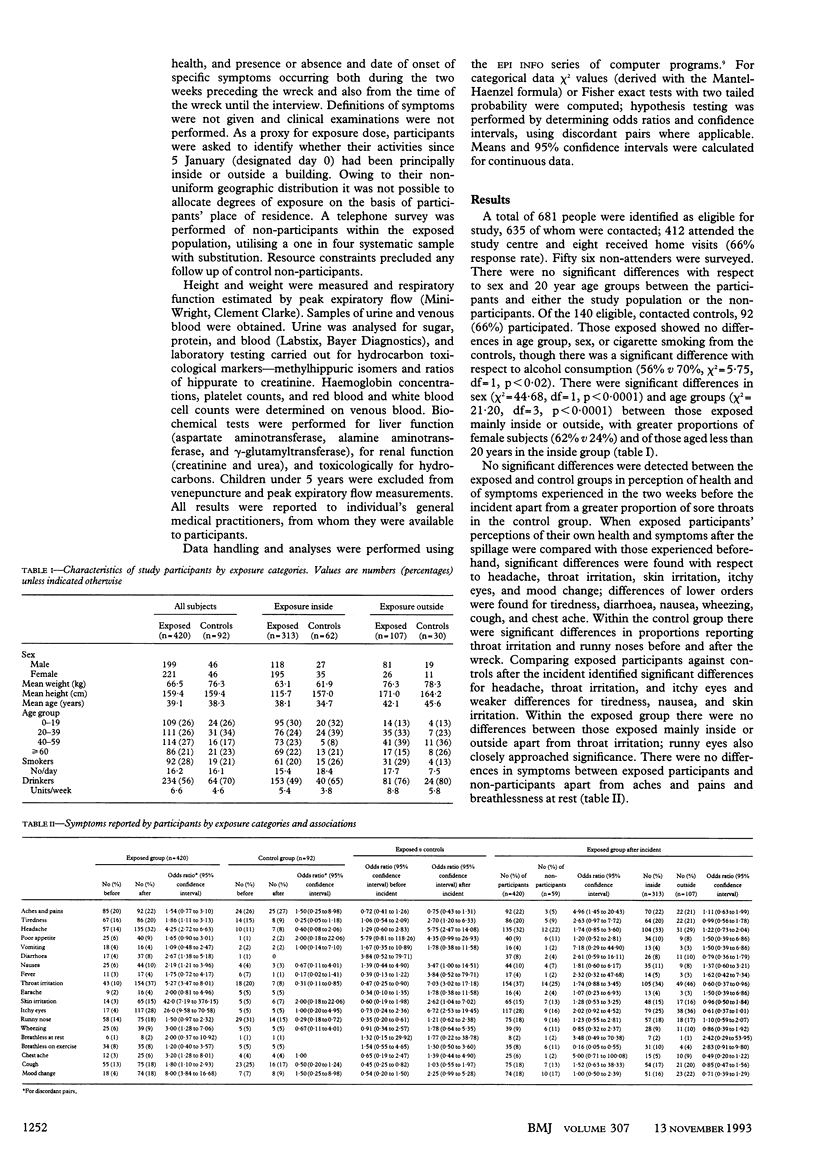
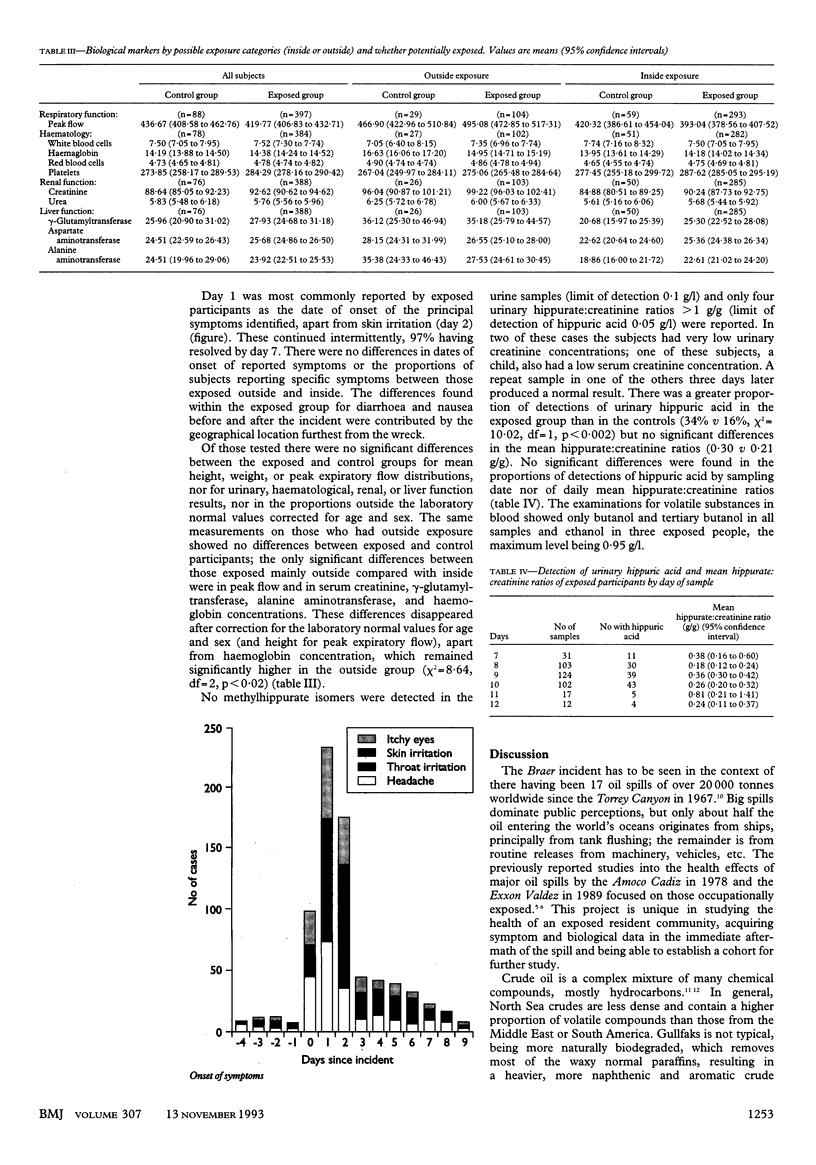
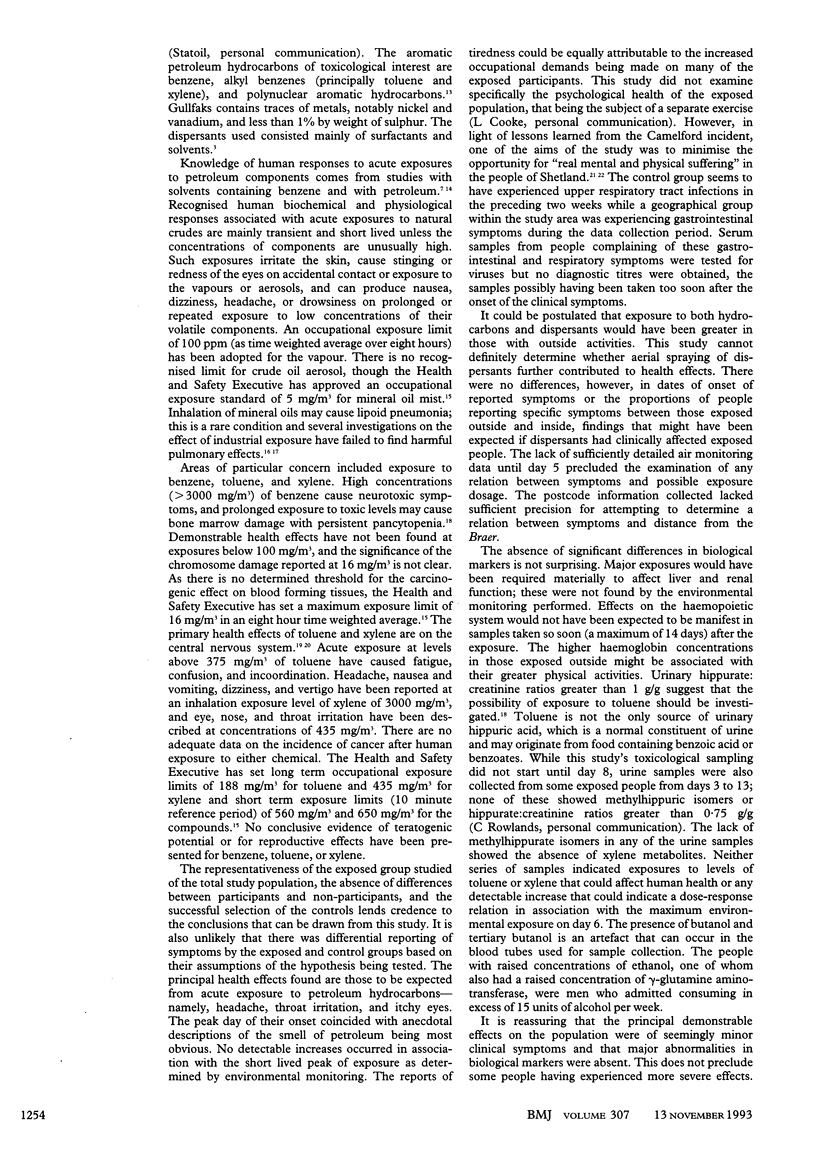
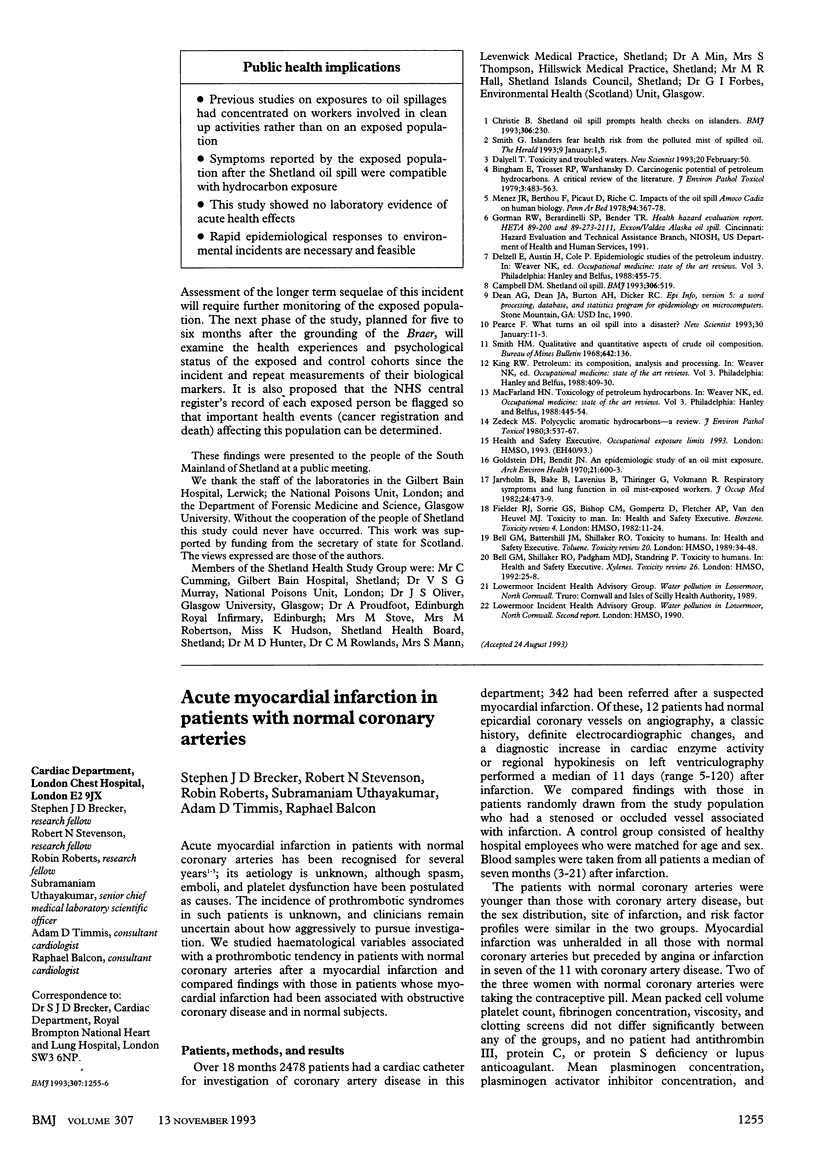
Selected References
These references are in PubMed. This may not be the complete list of references from this article.
- Bingham E., Trosset R. P., Warshawsky D. Carcinogenic potential of petroleum hydrocarbons: a critical review of the literature. J Environ Pathol Toxicol. 1979 Dec;3(1-2):483–563. [PubMed] [Google Scholar]
- Campbell D. M. Shetland oil spill. BMJ. 1993 Feb 20;306(6876):519–519. doi: 10.1136/bmj.306.6876.519-a. [DOI] [PMC free article] [PubMed] [Google Scholar]
- Goldstein D. H., Benoit J. N., Tyroler H. A. An epidemiologic study of an oil mist exposure. Arch Environ Health. 1970 Nov;21(5):600–603. doi: 10.1080/00039896.1970.10667302. [DOI] [PubMed] [Google Scholar]
- Järvholm B., Bake B., Lavenius B., Thiringer G., Vokmann R. Respiratory symptoms and lung function in oil mist-exposed workers. J Occup Med. 1982 Jun;24(6):473–479. [PubMed] [Google Scholar]
- Zedeck M. S. Polycyclic aromatic hydrocarbons: a review. J Environ Pathol Toxicol. 1980 Jun-Jul;3(5-6):537–567. [PubMed] [Google Scholar]


